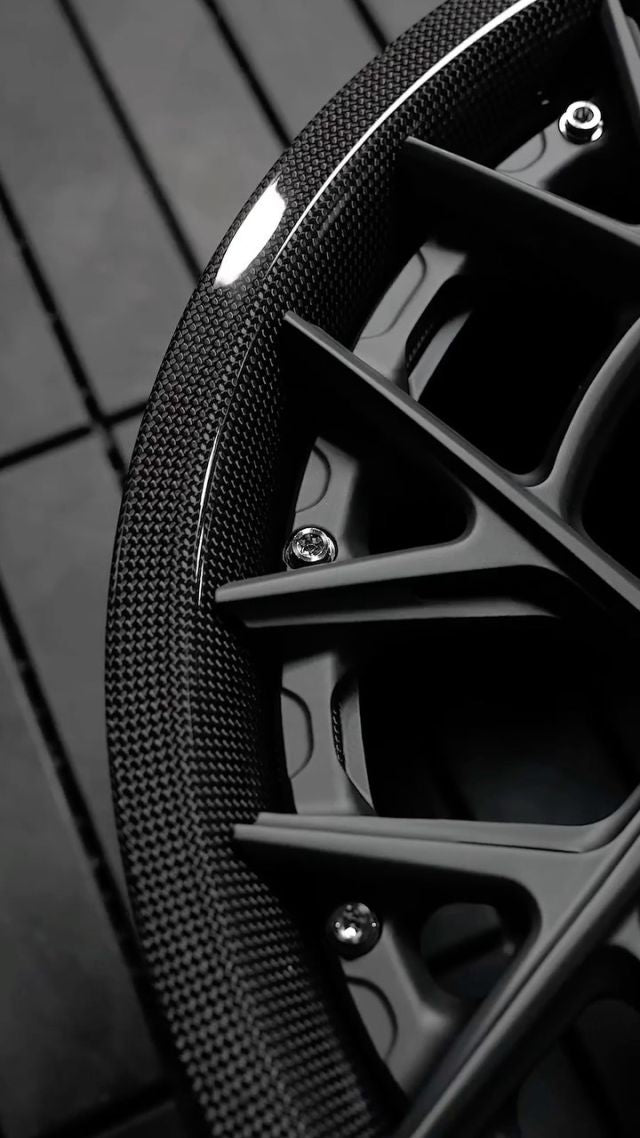
In-Depth Look: Carbon Fiber in Motorcycle Manufacturing
In recent years, the motorcycle industry has seen a significant shift towards the incorporation of advanced materials, with carbon fiber emerging as a game-changer. This lightweight yet incredibly strong material has revolutionized motorcycle manufacturing, offering a plethora of advantages over traditional materials like steel and aluminum. In this article, we will explore the composition, production processes, performance enhancements, and future trends of carbon fiber in motorcycle manufacturing. Through this in-depth examination, readers will gain a comprehensive understanding of why carbon fiber has become the material of choice for many manufacturers and enthusiasts alike.
What is Carbon Fiber and How is it Used in Motorcycle Manufacturing?
Understanding Carbon Fiber Composition and Weave
Carbon fiber is a polymer that consists of thin strands of carbon atoms, which are tightly woven together to form a fabric-like material. The composition of carbon fiber typically includes a high percentage of carbon, often exceeding 90%, which contributes to its exceptional strength-to-weight ratio. The weave of carbon fiber can vary, with common patterns including plain, twill, and satin weaves. Each weave pattern offers unique mechanical properties, making it suitable for different applications in motorcycle manufacturing. For instance, the twill weave provides a good balance between flexibility and strength, whereas a plain weave may be used for applications where rigidity is crucial.
The Role of Epoxy in Carbon Fiber Production
Epoxy resin plays an essential role in the production of carbon fiber components. The resin acts as a binding agent that infuses the carbon fiber cloth, creating a strong composite material. The use of epoxy not only enhances the adhesive properties of carbon fiber but also contributes to its overall durability and resistance to environmental factors. When combined with carbon fiber, epoxy ensures that the final product retains its high-strength characteristics while also being lightweight. This synergy between carbon fiber and resin is a pivotal factor in the performance of various motorcycle parts, from frames to body panels.
Advantages of Carbon Fiber Over Traditional Materials
Carbon fiber offers numerous advantages over traditional materials like steel and aluminum. One of the most significant benefits is its lightweight properties, which contribute to improved fuel efficiency and handling. Motorcycles constructed with carbon fiber components often exhibit enhanced agility and acceleration due to the reduction in overall weight. Additionally, carbon fiber showcases superior stiffness compared to metals, which means that it can withstand more substantial forces without deforming. This characteristic is particularly beneficial in high-performance motorcycles where precision and stability are paramount. Furthermore, carbon fiber's resistance to corrosion and fatigue makes it a more durable choice for long-term use, ultimately leading to lower maintenance costs.
How Does Carbon Fiber Enhance Motorcycle Performance?
Lightweight Properties of Carbon Fiber Components
The lightweight properties of carbon fiber components are one of the primary reasons why it has become a preferred material in motorcycle manufacturing. By utilizing carbon fiber, manufacturers can significantly reduce the weight of various parts, from frames to fenders. This reduction in weight translates into enhanced performance, allowing motorcycles to accelerate faster and handle better on the road. The decreased mass also contributes to improved braking performance, as lighter motorcycles require less force to slow down. As a result, riders experience a more responsive and enjoyable ride, further emphasizing the importance of using carbon fiber in modern motorcycle design.
Impact Resistance and Durability of Carbon Fiber
Another critical advantage of carbon fiber is its exceptional impact resistance and durability. Unlike traditional materials that may bend or dent upon impact, carbon fiber can maintain its integrity even in the face of significant force. This resilience is particularly important in the motorcycle industry, where safety and performance are paramount. Carbon fiber parts are designed to absorb shocks and vibrations, providing a smoother ride while protecting the rider. Moreover, the longevity of carbon fiber components ensures that they can withstand the rigors of regular use without succumbing to wear and tear, making them a worthwhile investment for motorcycle enthusiasts.
The Benefits of Carbon Fiber Wheels for Motorcycles
Carbon fiber wheels represent one of the most exciting applications of this material in motorcycle manufacturing. These wheels are not only lightweight but also offer superior strength and stiffness compared to traditional aluminum wheels. The use of carbon fiber wheels can significantly enhance a motorcycle's performance by reducing unsprung weight, which leads to improved handling and responsiveness. Additionally, carbon fiber's ability to dissipate heat effectively helps maintain tire performance during high-speed rides. Brands like Dymag have pioneered the production of carbon fiber wheels, showcasing the potential for innovation in motorcycle design and performance through the use of advanced materials.
What are Carbon Fiber Composites and Their Applications in Motorcycles?
Exploring the Structure of Carbon Fiber Composites
Carbon fiber composites are materials made from a combination of carbon fiber and a resin matrix, resulting in a versatile and robust product. The structure of these composites can be tailored to meet specific performance requirements, making them suitable for various applications in motorcycle manufacturing. The layering of carbon fabric within the resin allows manufacturers to customize the stiffness and flexibility of the final product, enabling the creation of components that are optimized for strength and weight. This customization is particularly valuable in high-performance motorcycles, where every gram matters in terms of speed and agility.
Advanced Manufacturing Techniques in Composite Production
The production of carbon fiber composites involves advanced manufacturing techniques that enhance the efficiency and quality of the final product. Techniques such as prepreg carbon fiber processing, where the carbon fiber cloth is pre-impregnated with resin, allow for precise control over the material's properties. Autoclave curing is another method that applies heat and pressure to ensure optimal bonding of the fibers and resin, resulting in a high-quality composite. These advanced techniques not only improve the mechanical properties of carbon fiber products but also streamline the production process, making it more cost-effective for manufacturers.
Cost Considerations of Carbon Fiber Composites
While carbon fiber composites offer numerous benefits, cost considerations can be a barrier to widespread adoption. The production of carbon fiber is often more expensive than traditional materials due to the intricate processes involved in its creation. Additionally, the initial investment in advanced manufacturing machinery can be significant. However, as technology advances and production methods improve, the cost of carbon fiber is expected to decrease. Motorcycle manufacturers are increasingly recognizing the long-term benefits of using carbon fiber, as the durability and performance enhancements can offset initial costs through reduced maintenance and improved rider satisfaction.
How are Carbon Fiber Components Manufactured for Motorcycles?
The Process of Creating a Carbon Fiber Frame
The creation of a carbon fiber frame involves several steps, beginning with the design phase. Engineers utilize computer-aided design (CAD) software to create precise models of the frame, optimizing its geometry for strength and weight reduction. Once the design is finalized, the manufacturing process begins with layering carbon fabric in a mold, followed by the application of resin. After this initial layering, the frame is subjected to autoclave curing, where heat and pressure are applied to ensure that the resin fully bonds with the carbon fiber. The result is a lightweight, high-strength carbon frame that meets the rigorous demands of motorcycle performance.
Utilizing Machines in Carbon Fiber Manufacturing
Modern carbon fiber manufacturing relies heavily on advanced machines that enhance precision and efficiency. CNC machines are often employed to cut carbon fiber cloth to the required dimensions, ensuring accuracy in the production process. Additionally, automated layup machines can assist in the layering of carbon fiber and resin, reducing the likelihood of human error and increasing production speed. The integration of robotics and automation in the manufacturing process not only streamlines production but also allows for greater customization options, enabling manufacturers to create bespoke carbon fiber components tailored to specific motorcycle models.
Quality Control in Carbon Fiber Production
Quality control is a critical aspect of carbon fiber production, as even minor defects can compromise the performance and safety of motorcycle components. Manufacturers implement rigorous testing protocols to ensure that each batch of carbon fiber meets strict quality standards. This may include visual inspections, tensile strength tests, and impact resistance assessments. By adhering to these quality control measures, manufacturers can guarantee that their carbon fiber products are reliable and perform optimally in real-world conditions. This focus on quality is essential for building trust with consumers who demand high-performance motorcycles.
What are the Future Trends of Carbon Fiber in the Motorcycle Industry?
Innovations in Carbon Fiber Technology
The future of carbon fiber in the motorcycle industry is promising, with ongoing innovations driving its development. Researchers are exploring new formulations of resin that can enhance the properties of carbon fiber composites, such as increased flexibility or improved thermal resistance. Additionally, advancements in recycling techniques may lead to more sustainable production practices, allowing manufacturers to repurpose carbon fiber waste into new products. These innovations not only enhance the performance of carbon fiber components but also contribute to the industry's sustainability efforts.
Potential Applications in Automotive and Aerospace Sectors
As manufacturers continue to explore the potential of carbon fiber, cross-industry applications are becoming increasingly relevant. The automotive and aerospace sectors are already utilizing carbon fiber composites for their lightweight and high-strength characteristics, and there is potential for collaboration between these industries and motorcycle manufacturers. By sharing advancements and best practices, the motorcycle industry can further innovate and improve its carbon fiber offerings, paving the way for new designs and enhanced performance across all sectors.
Environmental Impact and Sustainability of Carbon Fiber
With growing awareness of environmental issues, the sustainability of carbon fiber is becoming a focal point in the motorcycle industry. Efforts are underway to develop eco-friendly production methods that minimize waste and energy consumption. Researchers are also investigating the use of bio-based resins that could reduce the environmental footprint of carbon fiber manufacturing. As consumers increasingly prioritize sustainable practices, the motorcycle industry must adapt to meet these expectations by integrating carbon fiber in a way that aligns with environmental responsibility.



